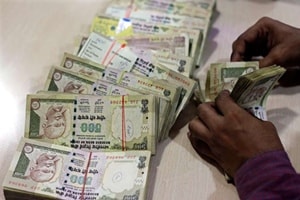No tax reform in India has generated such an enormous interest among businesses and the general public as GST. It has, in some ways, become the barometer of the government’s success and test of cooperative federalism, given that the Centre and states have come to a common platform for its implementation.
After a decade-long hiatus and due to the willingness and political acumen of the government to get most of the Opposition on board, the Constitutional Amendment Bill was finally passed in the Rajya Sabha on Wednesday.
The finance minister addressed various changes incorporated in the Bill which were largely aimed at addressing the concerns of Opposition parties and states.
Much to the industry’s relief and as recommended by the Chief Economic Adviser and demanded by the Congress, the proposal for 1% additional tax on inter-state supplies has been scrapped. This is indeed a welcome move and would eliminate any inefficiency such 1% non-creditable additional tax would have brought.
Further, wordings for compensation to states have been clarified and clearer assurance has been given to states for revenue compensation to eliminate any fear of revenue loss for the first 5 years.
Additionally, the mechanism for dispute resolution has been put in the Bill itself wherein specific provision has been inserted. Such amendment provides that the GST council will establish mechanism to adjudicate disputes between states and the Centre as well as two or more states arising out of recommendations of the GST Council or its implementation. Other clauses were also amended to establish framework for distribution of central taxes so to give states more reassurance.
Various Opposition parties had demanded rewording of both these provisions, for one of the major concerns raised by the Opposition was on the rate of GST. Though the demand for including the GST rate in the Constitutional Amendment Bill was yielded, there was a strong claim for including the rates in the legislative CGST and IGST Bills to be introduced later.
WATCH: GST Bill Passed: One Country, One Tax!
Emphasising on the fact that tax rate should be decided by the legislature and should not be at the whim of the executive, reassurance was sought from the finance minister that the legislative Bills to be introduced later would provide a cap of the GST rate. Another major demand was that the legislative Bills to be introduced later (i.e. GST law) should be introduced as a finance Bill and not money Bill so that the Rajya Sabha has the power to discuss. This marks the onset of one of the biggest taxation reforms of the country.
Few of the key immediate hurdles include getting the administrative and IT systems ready. The finance minister has stated that the GSTN (which is the IT backbone of GST) is at reasonably advanced stages of preparation. Further, the government has already released Model GST Law for public debate and discussions along with various draft process documents.
Things are finally looking positive on the implementation front, with the government being keen on meeting the April 1, 2017 deadline. Of course, there would be numerous challenges and difficulties which would accompany GST. However, the advantages of GST clearly outweigh these challenges.
GST is expected to create a common market and is likely to eliminate supply chain inefficiencies, incentivise manufacturing and generate employment. It is also expected to downsize the parallel economy and put India on a global map in terms of tax policies.
It is imperative that the industry now gears up to prepare for this landmark reform. The question now is not whether ‘GST would come by April 2017’ but ‘what if GST comes by.’
(The author is partner and national indirect tax leader, PricewaterhouseCoopers)

